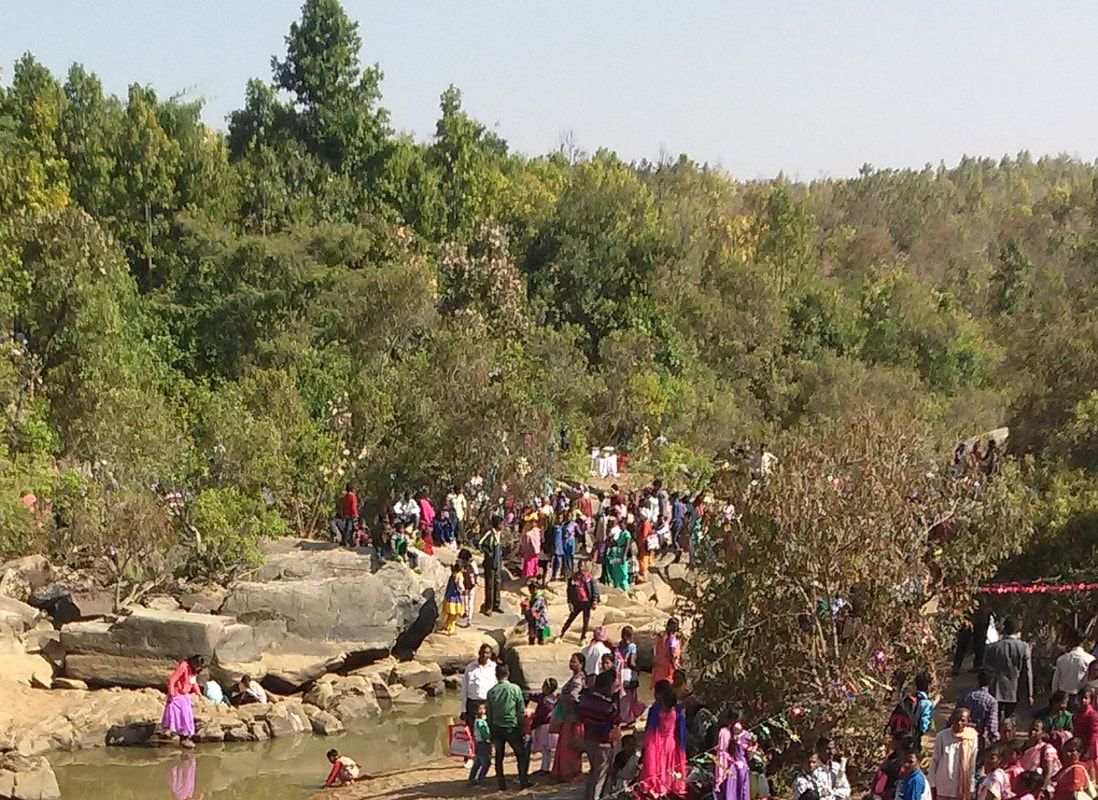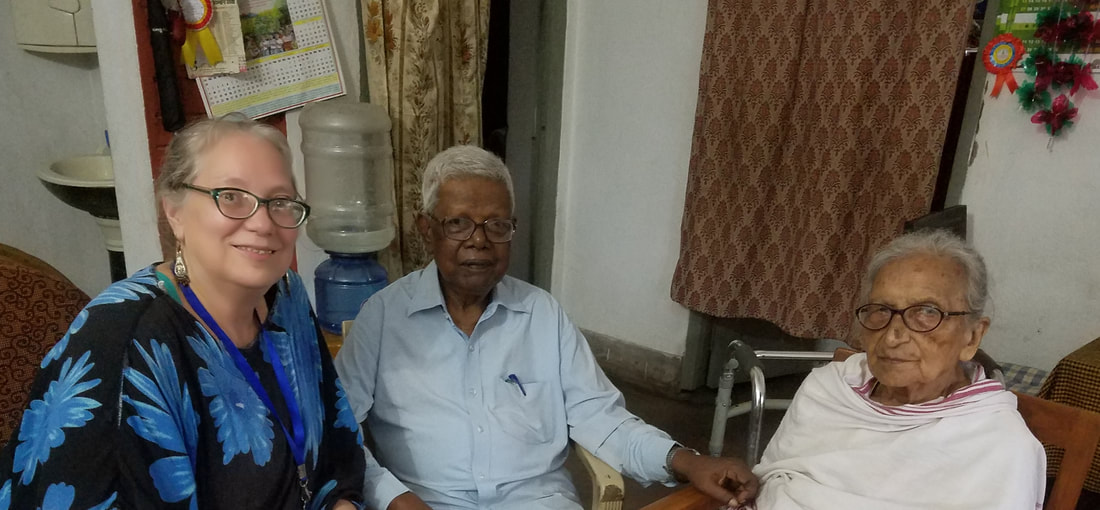|
What world have I stepped into? Mihir Vatsa in Tales of Hazaribagh (Speaking Tiger 2021) invited us on his journey into the world around his hometown; a small town of man-made lakes and elevated climate that wooed visitors over the last couple of centuries. A few settled there, like his family, and so it became his hometown. In his poetic prose, he says little of the people of the town or the traditions of his family. His return to his hometown is not to go back into his childhood and the place of his ancestors. Instead he is in search of refreshment and relaxation in the setting: the surrounding forests, hills, plateaus, valleys, rivers and waterfalls. He finds healing here after becoming overwhelmed by the stress of urban life.
What follows is not so much a review of his writing, as a pondering of what we might be missing from seeing only this perspective. His perspective is valid, genuine, and authentic. We end the book knowing he has found the peace he has been looking for and in that we also find comfort. While he observes and articulates the power, energy, control, and the preservation/conservation/beautification of this forest world, it is from his position of privilege and his license to easily take the time to explore, move around with relative ease, and articulate how it impacts him. So even though he is returning to his “hometown” he is still primarily observing it as an outsider. This is not a criticism, for my first attempt to be an author began also as a journey of returning. In so doing, I discovered myself and my roots, as recorded in the biography of my great great grandfather: Among the Original Dwellers: Remembering Ferdinand Hahn (Lulu: 2019). I embarked on this journey to rediscover the first generation that connected my family to India in the late 19th century. I was born into an American medical missionary family, my father was the fourth generation missionary and the third generation born in India. I spent most of my formative years in India. With that kind of background it is hard not to feel a little Indian, though my passport says I am American. To further complicate my identity, the ancestors who lived in Chota Nagpur from 1869-1915 were Germans living in British India. Researching their interesting lives brought me into contact with Christian Adivasis, many were educated and urban, but all longed to stay connected to their cultural heritage and know their history. I now hope to write a novel that explores the relationship of a German missionary wife of the 19th century (ie. my great great grandmother) and an Adivasi woman. It is clear that I cannot do that until I have done so much more research and have more experience to understand the Adivasi perspective. Taking on this challenge I try to read whatever I can about the Adivasi. I look for how they are portrayed not only in books but other mediums, and I gravitate towards whatever they themselves have written. However, Adivasi literature is only an emerging genre. Historically non-Adivasis write about Adivasis. True Adivasi literature, by Adivasis, is immersed in the tangle of translation. I, for example. Write in English, while working on improving my Hindi, and Adivasi culture remains predominantly an oral tradition. Each tribe has their own language with regional variations. When an Adivasi writer manages to write of their own culture, often it must be translated into multiple languages to be understood by their own people. Presently I gravitate to writers who have perhaps six degrees of separation from my primary subject. A great example is Mihir Vatsa’s Tales of Hazaribagh: An Intimate Exploration of Chhotanagpur Plateau.(Tiger Books: 2021). I truly enjoyed the read, for I also long to return to my childhood home (Mussoorie UK) to explore its beautiful landscape and landmarks and fascinating history. But he, like me, will perpetually be the outside observer, even in our own hometowns. As he wandered through the Sal forests, hills and plateaus, in pursuit of finding a little known waterfall, he often crossed the paths of the people who lived there. Often they looked at him puzzled and gave vague directions. Sometimes they dropped whatever they were doing and led him to the very spot he was looking for. I keenly read those parts, because that was the connection I was looking for. Vatsa was looking for the healing power of nature. I wanted to know more about the perspective of the people he met, and what wisdom they might have of this world. I still mostly have questions: Were they Adivasi? Did they live there since their ancestors had cleared the land? How were they impacted by the “development” that encroached their habitat, and visitors like Vatsa? Where is that story? And can an outsider ever really tell it? What, if any, significance was this waterfall, the rivers, the forest, the hills, the land? Or as Adivasi say "jal, jungal, jamin". I began with: What world did I step into? That is really all we do as outsiders. Many worlds have been created that millions have stepped into and feel that it is familiar enough to be "home". The Star Wars series took us to “a long time ago, to a galaxy far away…” How do we step into a real world, not of our making, but certainly of our (generically speaking) curiosity, meddling, exploring, and even exploiting? How do we step into that world and truly see it and know it? I am grateful for Tales of Hazaribagh, because it moved me into the setting of Hazaribagh, Jharkhand. Into the sal forests and rocky rivers that I have only had the privilege to glimpse briefly on my periodical visits to Jharkhand from 2016 - 2019. I've been jotting down my perspective in this blog and the journey has been transformational. My ancestors also wrote down what they perceived, explored, discovered, settled, etc. I found that they made a remarkable attempt to understand the Adivasi, who they lived among. And found they are still remembered: Ferdinand Hahn, wrote down Oraon folklore and created a Kurukh grammar that is still used today. In remembering his life, I became truly intrigued with the place and people and times that he lived in. I long to step into that world and rediscover it, not just for myself but for all of us to truly appreciate the landscapes, landmarks, and stories. It is not just a world that heals, it is a world that teaches and perseveres. It is a world, if we only could step into it, that could heal, like Mihir Vatsa in the beauty of Hazaribagh. I was just reminded that when I first went to Jharkhand I told an Adivasi elder that I have come to find my roots. He replied "That is good, from the root comes great trees."
0 Comments
Leave a Reply. |
Click here to learn more!
AuthorMary Girard with Bishop Nirmal Minz and his wife, Parakleeta, two remarkable leaders of the Adivasi Christians of Jharkhand. They are writer's themselves and have encouraged me much in my pursuit as a writer and have inspired many others. I am an author of my first book that is seeking publication. Among the Original Dwellers: Remembering Ferdinand Hahn, tells of the life story of my great great grandfather who was a missionary from 1868-1910 in Chota Nagpur. In writing his story I discovered the story of the Adivasi of the region who were also impacted by his life. I am now committed to inspiring others to learn and write about their Christian Adivasi heritage. Archives
April 2022
Categories |


 RSS Feed
RSS Feed